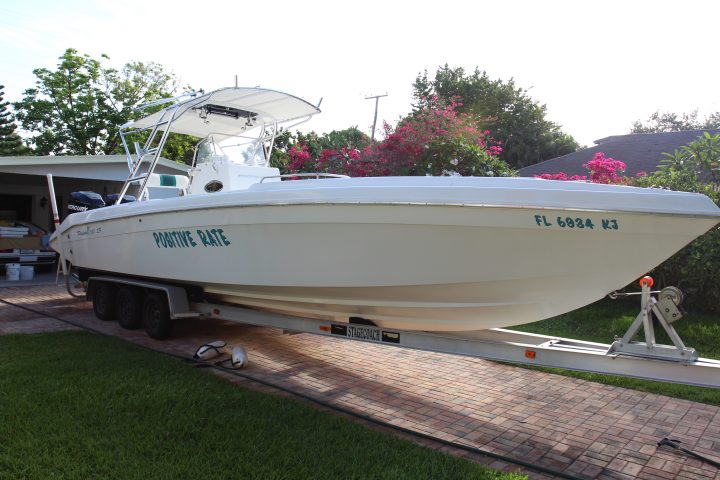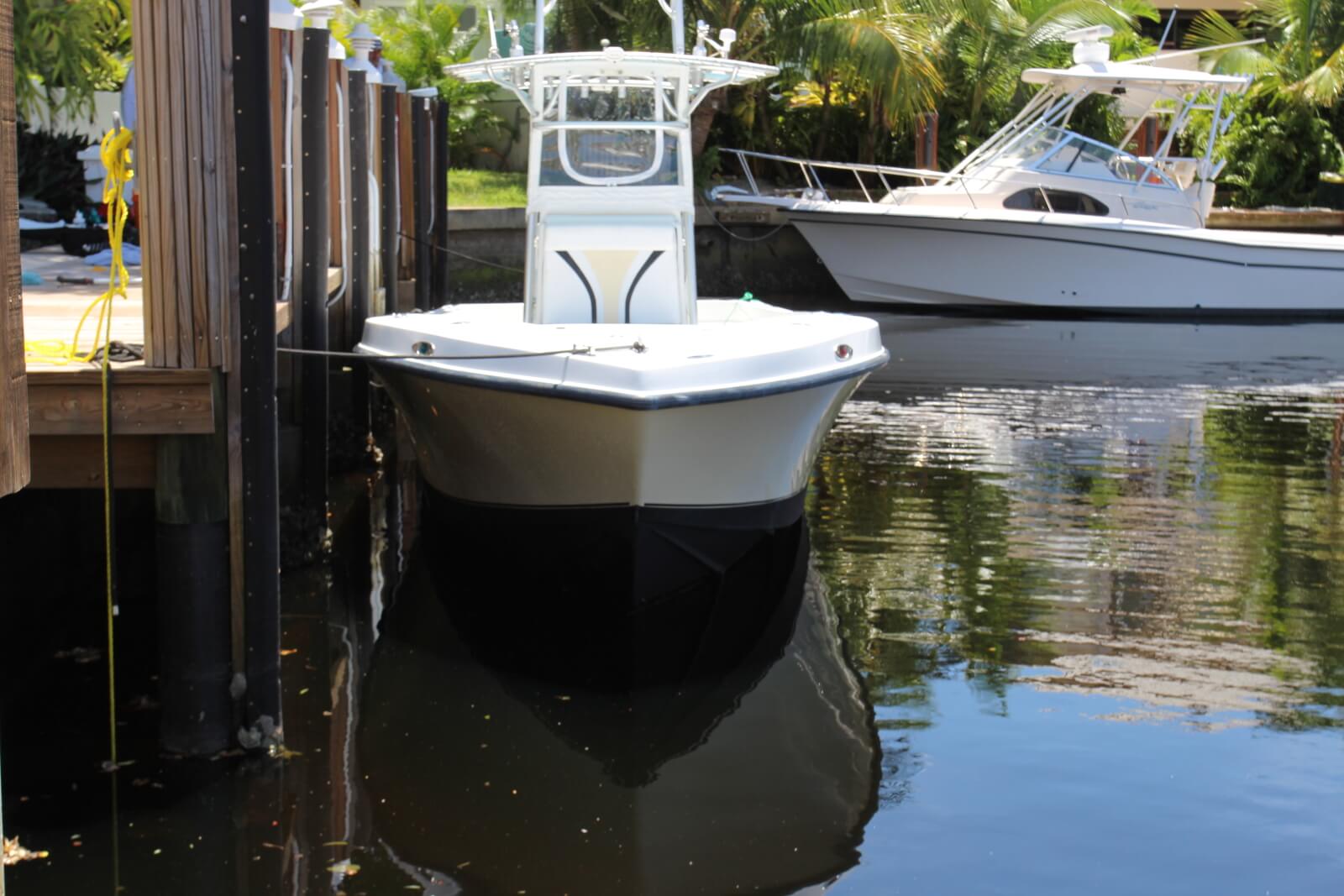Nautical Ventures reached out to us on applying Glidecoat ceramic coating to a used 26′ Hurricane located in Dania Beach, FL because the owner wanted to sell their boat.
The primary goals with working on the Hurricane included;
1). Restore showroom finish on the boat (remove oxidation, surface scratches and apply Glidecoat Ceramic Coating to prolong the showroom finish)
2). Enhance the appearance of the boat to help Nautical Ventures sell to potential boat buyer
3). Record the process of applying Glidecoat (before and after, record the steps, show gloss meter readings and address commonly asked questions)
In the video below, Eric Brandon, Sales Executive at Nautical Ventures and co-host of the The Weekly Fisherman Show interviews Christian Westhorpe, lead technician at Glidecoat on the process of applying the Ceramic Coating as they covered the following topics;
• Demonstrate the entire process of preparing and applying the Top Coating Kit
• The products included in the Top Coating Kit
• Address commonly asked questions about Glidecoat and the application process (hint: Why the level of preparation?)
• Why we use a gloss meter to measure the before and after on a boat
https://www.youtube.com/watch?v=54D0p_Ahsp8
What Are The Benefits Of Glidecoat Ceramic Coating
Glidecoat is designed to serve a dual purpose for boat owners by enabling used boats to be restored to their original shine and luster. And, ideal for brand new boats looking for a preventative solution from oxidization and salt damage to their new purchase.
1). Restore showroom finish
With proper preparation and applying the ceramic coating, your boat can be restored back to showroom finish. As Christian illustrated with the Gloss Meter Reading, the black stripe increased from 29.6 to 93.9 after the process. As a point of reference, brand new gel coat readings can render between 82-88.
Just a few other examples for you;
Boat: 29′ 2003 SeaVee
Results: In August 2016 the port side readings reached 86.9. In August 2017, the port side, which was exposed to the sun all day, gloss meter readings averaged 77.6 that reflects a reduction in readings of 9.3%, which given the continual exposure to the sun is minimal.
Click here to read the full case study
Boat: 1997 32′ Dakota
Results: After three days of work, we removed the competitive product from Marshal’s boat and applied Glidecoat Ceramic Coating. Taking the surface from gloss readings as low as 6, to upwards of 78
Click here to read the full case study

2). Fill in the pores of the gel coat to provide a protective barrier
This is a significant difference between Glidecoat and your traditional boat wax. When first applying the product, you will notice you are applying a liquid onto the surface that within a matter of seconds will start to make the surface appear like it is sweating.
What is happening, is the product is filling in all of the pores of the gel coat and creating a protective barrier.
As a result, this eliminates the ability for salt, acid, fish blood, etc to seep into the pores of the gel coat. Whereas, with a traditional wax, wax is just sitting on top of the surface and over time with wash away.
3). Last up to 18 months here in South Florida and longer up north
As I am sure you have experienced yourself, wax doesn’t last long here in South Florida. If you are lucky, maybe 6 months (maybe)! And, doesn’t provide any protection for your boat from sun damage and salt.
Our ceramic coating will last up to 18 months here in South Florida and typically two seasons up north.
You may wonder why your wax doesn’t last long here in South Florida. Wax typically begins to evaporate at 110 degrees. For boat owners with their boat exposed to the hot South Florida sun all day, you can imagine the surface of your boat gets hotter than 110 during the day. Whereas, the lab testing of our product indicates it can sustain heat as high as 1,112 degrees (Yep, no typo – 1,112 degrees).
Conclusion
Boat maintenance and pride in ownership varies from boat owner to owner.
If you take great pride in the appearance of your boat.
Then, it is time to consider the significant advantages of ceramic coatings compared to traditional wax.


